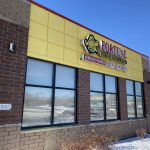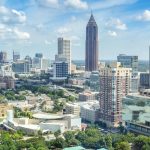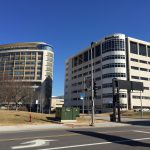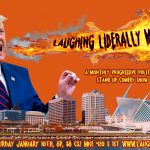Voters Approved $1.8 Billion for Schools
And have given 24 districts permission to exceed state spending limits.
It’s a big number: $1.8 billion in new debt.
Since January 2016, voters statewide have told their local school districts to issue bonds totaling $1.8 billion to build new schools, remodel old schools and pay for other construction projects. Voters, their neighbors and their kids will be paying off that $1.8 billion, with interest, over decades.
The willingness of homeowners to raise their property taxes to build and remodel local schools is part of the Capitol fight over Gov. Scott Walker’s call to boost state aid for K-12 schools by $649 million over the next two years.
Republicans who control the Legislature will soon have to decide whether to go along with Walker’s request, or reduce it and spend some of that additional $649 million on other pet programs.
School districts ask their voters to approve more money in three ways – authorizing new construction bonds and allowing districts to exceed revenue limits that control spending either permanently (“recurring”) or for a fixed number of years (“non-recurring”).
The $1.8 billion number, tracked by the Wisconsin Taxpayers Alliance, includes only construction projects and not votes to let districts exceed state-imposed levy limits. It doesn’t, for example, include the vote by Green Bay-area voters to let the district exceed spending limits by $16.5 million a year for 10 years, or a total of $165 million.
Last Tuesday, 16 school district building referendums passed, authorizing $464.5 million in new debt, and 13 others failed.
The five most expensive ones that passed, according to the state Department of Public Instruction: $162.7 million for Verona-area schools, most of which will be generated from a TIF district encircling Epic, the giant high-tech medical records company; $68.2 million for Green Bay-area schools; $39.9 million for Grafton schools; $38.5 million for Mt. Horeb-area schools, and $27 million for North Fond du Lac schools.
Voters in other districts stopped building plans. Burlington-area voters turned down a request for $68.3 million in bonding authorization. Arrowhead UHS residents rejected a $36.6 million referendum, and a $24.9-million referendum failed in Clintonville.
When confronted with building referendums, voters were again “quite discerning,” said Todd Berry, president of the Wisconsin Taxpayers Alliance.
“In the context of bonding, a 55% passage rate on debt is in keeping with historical trends,” Berry said. “It’s down from 77% last year.”
“The interesting thing about debt referenda is when you give voters in districts multiple questions, say about repairs or energy efficiency projects or for core educational needs, those will have an easier time than referenda for projects regarded as possibly less essential, such as for athletic fields and auditoriums.”
Voters Tuesday also decided whether their local school district should get permission to ignore state-imposed spending limits for one year or for more than a year. Voters gave 24 school districts permission to exceed state-imposed spending limits, while voters in 12 other districts told their school boards to live with those limits.
“That means people were willing to give officials revenue limit relief for a fixed period of time. By comparison, there were far fewer recurring revenue limit referenda, and the passing rate was about 50%, which is about close to normal.
“What voters were saying in those cases is, ‘We won’t write you blank checks forever’.”
There are different theories on why most school referendums have passed in the last 16 months: The state’s economy is better, so homeowners feel they will be able to pay higher property taxes. Some major building referendums were approved about 20 years ago and were being paid off, so voters were willing to back new construction or remodeling projects.
One other theory: Voters feel they must vote for building referendums to keep their local school open. “Schools districts across Wisconsin are forced to go to referendum time and again just to keep the lights on in schools that have served generations of Wisconsinites very well,” said Democratic Sen. Janet Bewley.
Steven Walters is a senior producer for the nonprofit public affairs channel WisconsinEye. Contact him at stevenscwalters@gmail.com
The State of Politics
-
A Wisconsin Political Trivia Quiz
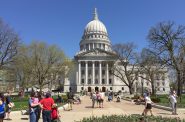 Dec 15th, 2025 by Steven Walters
Dec 15th, 2025 by Steven Walters
-
The Fight Over Wisconsin’s House Districts
 Dec 8th, 2025 by Steven Walters
Dec 8th, 2025 by Steven Walters
-
The Battle Over On-Line Betting
 Nov 24th, 2025 by Steven Walters
Nov 24th, 2025 by Steven Walters





